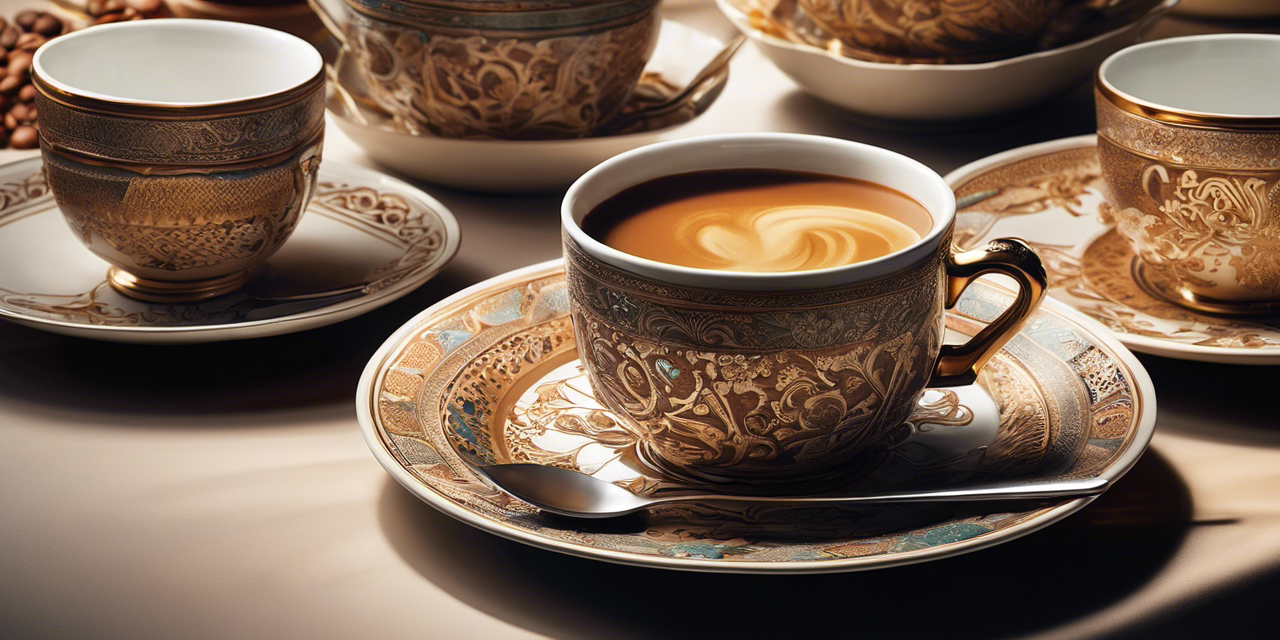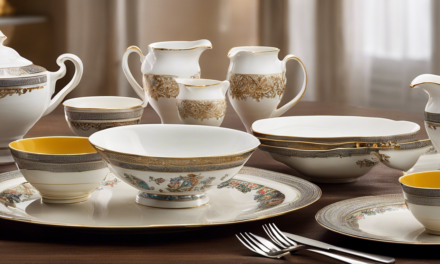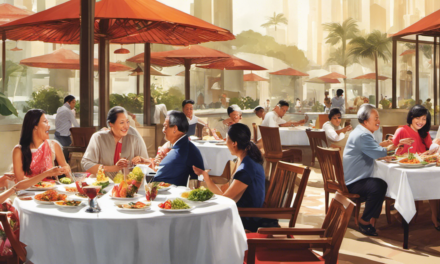The Cultural Tapestry of Coffee Cups and Tableware: An Overview
Coffee embodies more than the simple pleasure of a hot drink. It's a fabric woven into our lives, bridging gaps between cultures, and telling tales of shared human experiences. Our exploration begins with the humble coffee cup and the tableware that accompanies it. As we begin our journey, we find these everyday items whispering stories in a secret language – the language of design and symbolism.
How Coffee Cups Became an Essential Symbol
Coffee has been adored globally for centuries, and the vessels that contain this beverage have a fascinating past. Initially, these cups were merely practical clay pots, but as the popularity of coffee grew, so did the complexity and significance of the cups. With each evolution in design comes a rich tapestry of symbolism unique to the era and culture.
List of Evolution of Coffee Cups Designs and Their Symbolisms
| Era | Design | Symbolism |
|---|---|---|
| Ancient Times | Clay Vessels | Practicality |
| Medieval Period | Wooden Mugs | Durability |
| Renaissance | Porcelain Cups | Elegance and Nobility |
| Modern Day | Varied (glass, ceramic) | Functionality and Personal Preference |
A coffee cup isn't just a container; every pattern and design element communicates a particular message or upholds a cherished tradition. Floral patterns might be a nod to the concepts of fertility and abundance, whereas geometric patterns often strike a chord of balance and harmony.
The Saga of Tableware: A Chronicle of Changes
Just as coffee cups have evolved, so too has the array of tableware items such as plates, bowls, and utensils. Historically, they've transitioned from the grand silverware of ancient civilizations to the delicate porcelain artworks from the East. Regardless of the form they take, they remain closely tied to societal norms and customs.
Tableware shapes also hold an undercurrent of symbolic connotations. For instance, a circular cup might embody unity and wholeness, while a square plate might stand for stability and structure.
Understanding Cross-Cultural Symbolism
The symbolic nature of coffee cups and tableware is not exclusively tied to a particular culture. It's a kaleidoscope of cultural narratives and interpretations. A symbol considered lucky in one culture might hold an entirely different meaning in another. These cultural nuances paint a broad spectrum, helping us understand and appreciate the diverse world of tableware symbolism.
Wrap-Up of the Overview
In essence, coffee cups and tableware, in their myriad designs and forms, are silent storytellers. They weave tales of historic traditions, societal customs, and cultural values. Next time you lift your cup of coffee, remember it's not just a beverage holder – it's a symbol, a cultural artifact, and a piece of history. The journey into the symbolism of coffee cups is just beginning – stay tuned to unearth more intriguing insights.
The Evolution and Symbolism Embodied in Coffee Cups
Coffee cups, beyond being mere vessels for our cherished brew, narrate fascinating chronicles of cultural evolution and symbolism. Starting from rudimentary clay containers, coffee cups have been transformed by the beverage's widespread appeal, each design revealing an exclusive symbolism.
A Brief History of Coffee Cups
- Clay vessels: Coffee cups began their journey as simple clay containers, sized just right to cradle a portion of the stimulating drink.
- Ceramic innovations: Over time, as coffee gained popularity, the cups evolved. Craftsmen began working ceramics, leading to the birth of an array of coffee cups.
- Symbolism through designs: Each new design represented a unique cultural symbol, turning each cup into a silent storyteller.
Coffee cup designs, whether intricate or minimalistic, encapsulate messages that speak volumes about the traditions they stand for. Floral designs on coffee cups, for instance, could denote fertility and prosperity, while geometric patterns typically represent equilibrium and concord.
Cultural interpretations of these symbols differ wildly across geographies. What is seen as lucky in one cultural context could carry an entirely different connotation elsewhere. Acknowledging these cultural variations enables us to appreciate the vibrant tapestry of symbolism that coffee cups represent globally.
Having an understanding of the symbolism in coffee cups can transform our interaction with the humble coffee cup, turning each sip into an immersive cultural experience.
| Design | Symbolism | Culture | |
|---|---|---|---|
| Floral | Fertility, Prosperity | Universal | |
| Geometric | Balance, Harmony | Universal | |
| Animal | Strength, Freedom | Universal |
It is this symbolic wealth that adds depth to our daily coffee rituals, making the humble coffee cup a canvas of myriad tales told over centuries.
Unraveling the Cultural Significance of Tableware Shapes and Designs
Tableware items—plates, bowls, cutleries—tell stories, not just through their designs, but also their shapes. The geometry of an item can convey symbolic meanings, breathing life into an otherwise mundane object.
Unearthing the Symbolism in Tableware Shapes
- Circular shapes: Representing unity and entirety, a circular cup or plate carries with it a sense of completeness.
- Square shapes: Items with square shapes, like a plate, often stand for stability and structure, emphasizing order and arrangement.
By understanding these symbolic meanings, we can uncover messages hidden in the shapes of everyday tableware items. This practice enables us to appreciate the underlying narratives, adding depth to our dining experiences.
Each culture imparts its unique symbolism onto tableware, resulting in varied interpretation of designs. Just like coffee cups, these distinctions allow us to appreciate the wide range of symbolism associated with tableware worldwide.
Understanding the symbolism in tableware not only enriches our dining experience but also strengthens the cultural connections we forge with each shared meal.
| Shape | Symbolic Meaning |
|---|---|
| Circle | Completeness, Unity |
| Square | Stability, Structure |
Hence, the simpleness of our everyday dining wares masks a rich tapestry of traditions, cultural diversity, and personal expressions, waiting to be unveiled and appreciated.
Exploring Coffee Traditions and Rituals: From Morning Coffee to Afternoon Tea
Coffee rituals, steeped in symbolism, form an integral part of our daily lives. For many, the morning coffee practice is a sacred routine that kickstarts the day. The choice of one's coffee cup and its use can offer glimpses into an individual's personality, mood, and aspirations.
Morning Coffee Rituals and Their Significance
- The type of coffee cup one chooses can suggest personality traits. For example, a minimalist may opt for a simple white mug while a vibrant individual might prefer a brightly colored cup.
- The ritual of brewing the first cup of coffee indicates the importance we place on starting our day on a positive note.
- Sharing a morning coffee ritual with family or friends can signify a nurturing and empathetic character.
Moreover, certain cultures treat afternoon tea with high reverence. Each element, from the elegant teacups to the delicate saucers and accompanying cutlery, contribute to the experience. These rituals foster social connections anchored in relaxation and collective indulgence.
The Tradition of Afternoon Tea and Its Symbolic Meanings
- The use of decorative teacups depicts an appreciation for beauty and refinement.
- Devoting time for afternoon tea communicates the value placed on relaxation and self-care.
- Sharing an afternoon tea with others fosters connection and camaraderie, symbolizing unity and shared experiences.
Lastly, coffee cup reading, or tasseography, adds another layer of symbolism. This ancient practice involves interpreting patterns and symbols left by residual coffee grounds, with each symbol holding a special meaning. Such a practice can offer insights into the future or personal guidance.
Fortune Telling with Coffee Grounds: Decoding the Symbols
- Animal shapes: Depending on the animal, this could mean strength, freedom, danger, or luck.
- Letters or numbers: These could represent important dates, initials, or lucky numbers.
- Geometric shapes: These symbols often suggest a need for balance or stability.
Our coffee traditions, from the first sip in the morning to shared cups in the afternoon, are interlaced with highly personal symbolism. These rituals, whether conscious or not, enhance the significance of our everyday lives, cementing the role coffee plays in our social bonds.
| Ritual | Symbolism | |
|---|---|---|
| Morning Coffee | Beginning, Awakening | |
| Afternoon Tea | Relaxation, Unity | |
| Tasseography | Insight, Guidance | |
The Fusion of Cultural Heritage and Modern Implications in Singapore's Tableware Aesthetics: Conclusion
Singapore's vibrant tableware aesthetics is a testament to a delightful fusion of the nation's rich heritage and modern influences. Traditional coffee shops or 'kopitiams' aren't just serving coffee and tea; they're pouring out stories steeped in symbolism. Each serving style and unique local favorite adds to the richly woven symbolic language of Singapore's coffee cup culture.
Examining Traditional Symbolism in Singaporean Tableware
- Traditional motifs: Tableware frequently bears traditional symbols reflective of Singapore's extensive cultural lineage and diversity. From Peranakan inspired motifs to Chinese calligraphy and Malay patterns, every design resonates profoundly with the locals.
- Singaporean-inspired designs: These designs are not just about captivating aesthetics but also celebrate the nation's rich heritage. Each piece tells a story, offering authentic dining experiences.
- Shared meals and symbolism: Engaging with the symbolism behind Singapore's tableware fosters a deeper connection during shared meals, promoting a better understanding of and appreciation for the island state's diverse cultural narratives.
By embracing the symbolic richness embedded in the design of Singapore's coffee cups and tableware, we can weave a deeper understanding of the nation's cultural heritage into every dining experience. As a result, these everyday items transform from mere objects to meaningful links that bind us to the cultural roots of the Lion City.
| Design Element | Symbolic Meaning |
|---|---|
| Peranakan Motifs | Heritage, Diversity |
| Chinese Calligraphy | Wisdom, Artistry |
| Malay Patterns | Tradition, Unity |
In conclusion, delving into the symbolic language of coffee cups and tableware opens windows to the rich tapestry of diverse cultures and traditions. It adds essence to our daily rituals and dining experiences, making even ordinary moments extraordinary. From the humble coffee cup to the elaborately designed dinner plate, every piece of tableware holds a story, a silent whisper of its origin, waiting to be discovered and appreciated.





